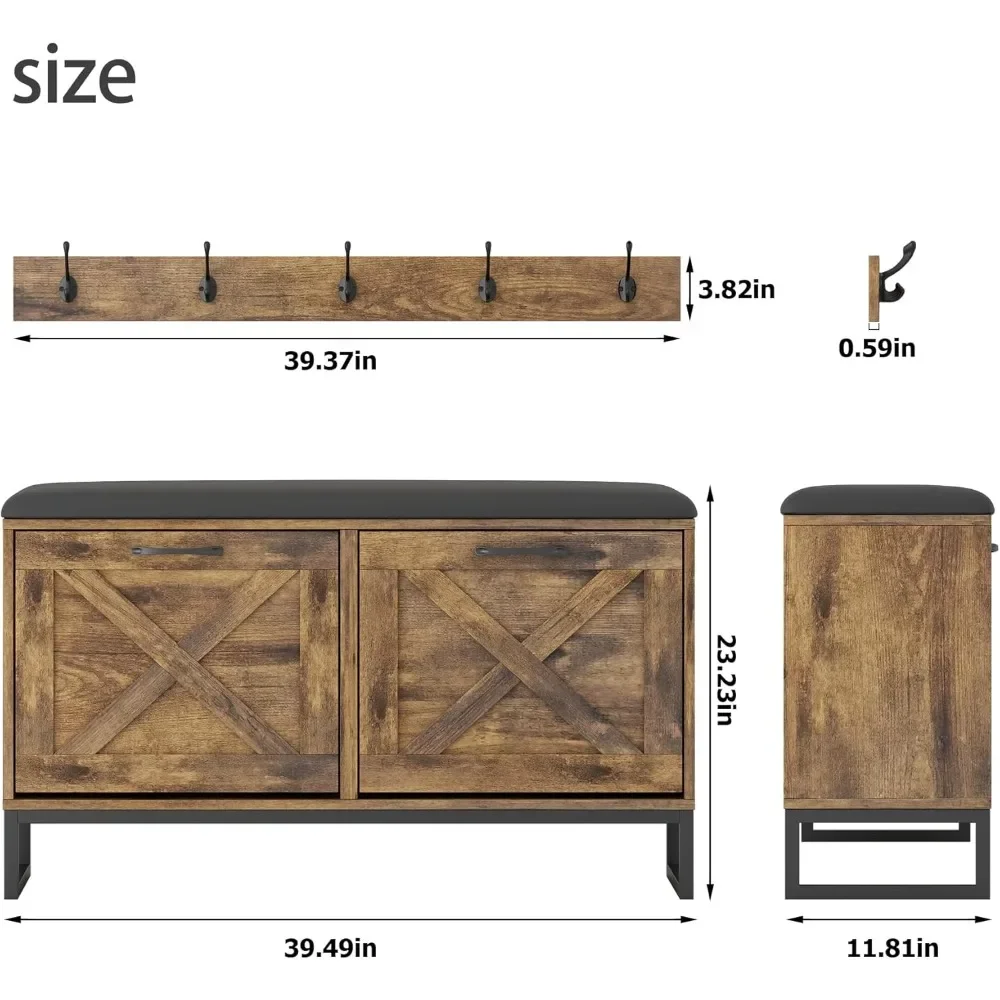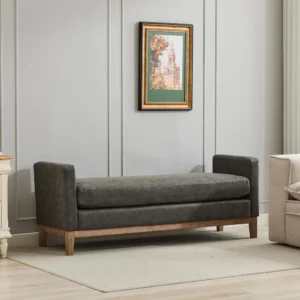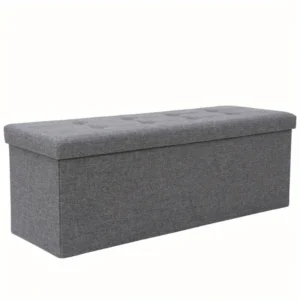Understanding Your Entryway’s Full Potential
Your entryway serves as the crucial transition zone between the outside world and your home sanctuary. More than just a passageway, this space sets the tone for your entire home while shouldering the practical burden of containing everyday essentials. When properly organized, your entryway reduces daily stress by eliminating the frantic morning search for keys or the frustration of tripping over piled shoes.
Studies suggest that an organized home environment can save the average person nearly 10 minutes daily looking for misplaced items—that’s over 60 hours annually! Moreover, well-organized spaces have been linked to reduced anxiety levels and improved mental clarity.
The foundation of entryway organization rests on two critical components: shelves and benches. These versatile elements work together to create both functional storage and an aesthetically pleasing first impression. Investing time in transforming your entryway with space-saving benches lays the groundwork for smoother daily routines and a more welcoming home atmosphere.
Assessing Your Current Entryway Space and Needs
Before diving into specific solutions, take time to evaluate your unique entryway constraints and requirements. Understanding your available space and how your household uses this area will determine the most effective organization strategy.
Consider these diagnostic questions:
* What are the exact dimensions of your entryway? (Narrow hallways typically measure 3-4 feet (0.9-1.2m) wide, while standard foyers range from 6-8 feet (1.8-2.4m))
* Which everyday items consistently create clutter in this space?
* How many people regularly use this entrance?
* What are your family’s specific routines and traffic patterns?
* Which storage challenges cause the most daily frustration?
Taking precise measurements before purchasing any furniture is crucial. Consider both floor space and wall clearance for doors and pathways. Even the smallest spaces can benefit from thoughtful organization—many homeowners successfully organize small entryways with benches by selecting appropriately scaled pieces and maximizing vertical storage opportunities.
Essential Elements of a Functional Entryway System
A truly effective entryway organization system addresses several core needs while maintaining visual appeal. Think of your entryway as comprising distinct functional zones:
- Drop zone: Designated space for mail, keys, phones, and wallets
- Seating zone: Area to sit while removing or putting on shoes
- Transition zone: Space to hang coats and bags when entering or leaving
- Storage zone: Organized containment for seasonal items and everyday essentials
Every successful entryway system incorporates these fundamental elements:
* Seating for comfortable shoe changes
* Closed storage for visual tidiness
* Open storage for frequently accessed items
* Display space for decorative elements and necessities
* Adequate lighting for functionality and ambiance
The most efficient systems integrate both vertical and horizontal storage solutions, using wall space for hooks and shelves while utilizing floor space for benches and cabinets. High-quality entryway bench storage solutions serve as the cornerstone of many well-designed systems, providing both seating and containment in one versatile piece.
Strategic Selection of Entryway Benches: Form Meets Function
Selecting the right bench requires balancing practical needs with space constraints and aesthetic preferences. Consider how your bench will function in daily use—will it primarily provide seating, storage, or both?
| Bench Type | Typical Dimensions | Storage Capacity | Best For |
|---|---|---|---|
| Lift-top Storage | 36-48” W × 16-18” D × 18” H (91-122cm × 40-46cm × 46cm) | 4-6 cubic feet | Hidden storage for seasonal items |
| Cubby-Style | 42-60” W × 16-18” D × 18-20” H (107-152cm × 40-46cm × 46-51cm) | 6-12 pairs of shoes | Families with multiple shoes per person |
| Slim Hall Bench | 30-40” W × 12-14” D × 18” H (76-102cm × 30-36cm × 46cm) | Minimal; primarily seating | Narrow entryways with separate storage |
For households with limited space, look for compact designs that maximize functionality without overwhelming the area. Larger families might prioritize shoe storage benches with multiple compartments to accommodate everyone’s footwear.
Material selection impacts both durability and style. In high-traffic areas, consider:
* Solid wood for lasting durability and classic appeal
* Metal frames for modern aesthetics and structural strength
* Performance fabrics for cushions that resist staining and wear
Choose proportions that complement your space—oversized pieces overwhelm small entryways, while undersized options fail to meet functional needs in larger areas.
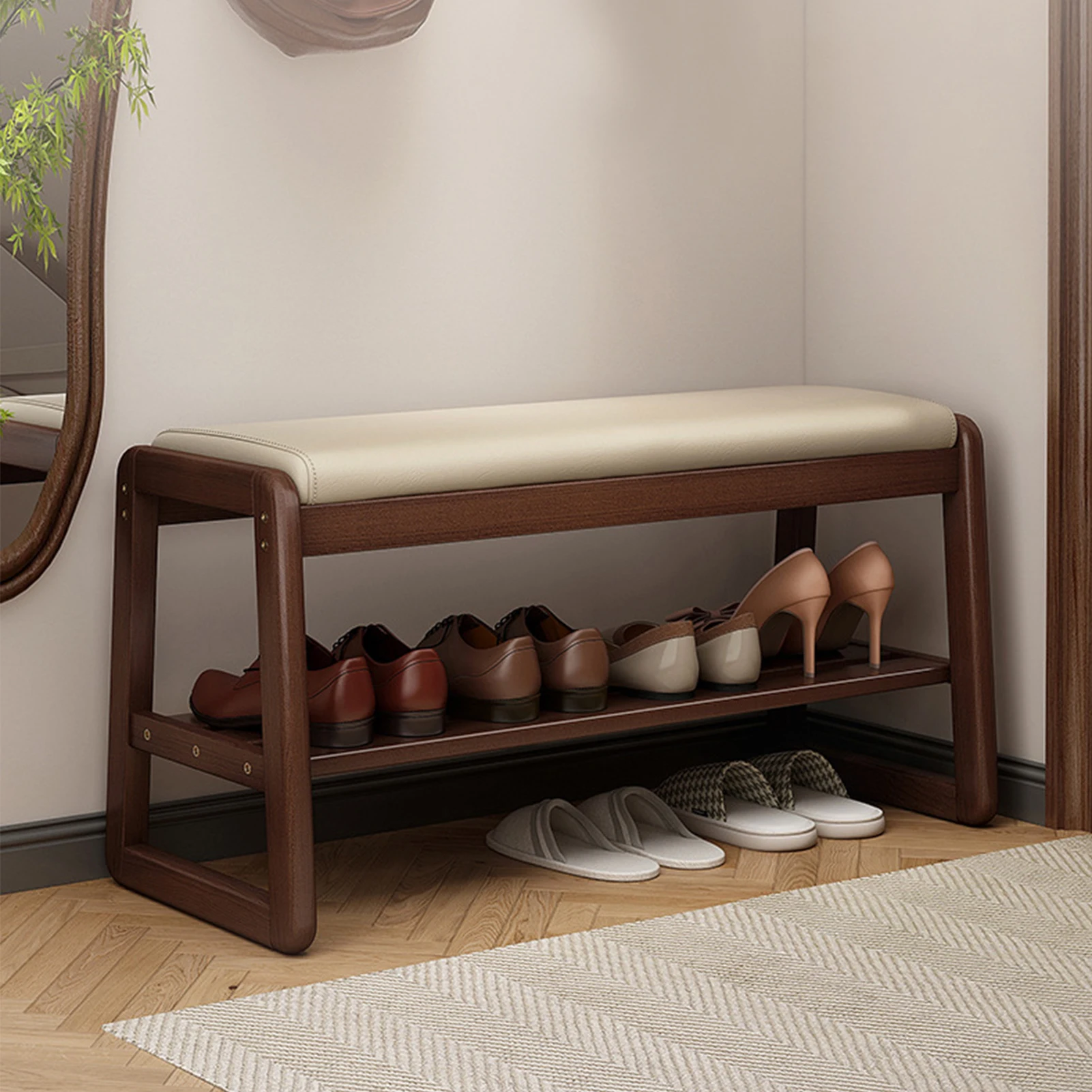
Maximizing Your Bench’s Organizational Potential
Once you’ve selected an appropriate bench, implement these strategies to optimize its storage capacity:
- Implement dividers in open storage areas to prevent items from mingling and create visual order
- Use fabric bins or baskets within cubbies to contain smaller items while adding textural interest
- Apply the one-in-one-out rule for seasonal items to prevent overflow
- Create designated zones within your bench storage for each family member
- Install additional hooks or small shelves near the bench for related items
Standard shoe cubbies accommodate approximately 8-10 adult pairs, though this varies by footwear type. Consider vertical shoe organizers for boots and athletic shoes that require additional height.
For benches with lift-top storage, use smaller containers inside to segment the space for different categories of items. This prevents the bench from becoming a catchall where items disappear into the abyss. Many homeowners find that combining entryway bench and shelf storage creates the most comprehensive organization system by utilizing both horizontal and vertical space.
Selecting the Right Shelving Solutions for Your Entry
Vertical storage dramatically increases your entryway’s organizational capacity without consuming valuable floor space. When selecting shelving options, consider both functional requirements and installation limitations.
Popular entryway shelving options include:
- Floating shelves – Clean, minimal appearance with hidden mounting hardware; typically support 15-30 pounds (7-14kg) depending on mounting method
- Bracket shelves – Higher weight capacity (30-50 pounds/14-23kg) with visible supports; more suitable for heavy items
- Built-in units – Custom-fitted to your space; maximum stability and integration
- Modular systems – Adjustable configurations that can evolve with changing needs
For optimal functionality, position shelves at appropriate heights based on item access frequency and who needs to reach them. Consider these general guidelines:
- Everyday items: 4-5 feet (1.2-1.5m) from the floor
- Decorative or seasonal items: 5-6 feet (1.5-1.8m) from the floor
- Children’s items: 2-3 feet (0.6-0.9m) from the floor
Strategic shelving placement works in tandem with bench selection when you need to maximize hallway space with benches and other storage elements.
Organizing Your Entryway Shelves Effectively
Transform your shelves from simple storage surfaces into efficient organization systems with these strategies:
Create logical groupings based on use frequency and function. Position everyday items at eye level, while seasonal items can be stored higher or lower. Use the prime real estate (middle shelves) for items you access daily.
Incorporate these organization tools to maximize shelf efficiency:
- Decorative baskets or bins for containing small items while adding visual appeal
- Letter sorters or mail organizers to prevent paper clutter
- Small drawer systems for tiny essentials like keys and sunglasses
- Bookends to keep reading materials and important documents upright
- Labeled containers for quickly identifying contents
Balance practical storage with decorative elements to create visual interest. The 70/30 rule works well—dedicate about 70% of shelf space to functional storage and 30% to decorative items that enhance your entryway’s appearance.
When organizing shoe storage benches, coordinate your shelf strategy to complement these lower storage areas, creating a comprehensive system that addresses all entryway needs.
Creating a Cohesive Bench and Shelf System
For maximum functionality and visual harmony, your bench and shelving should work together as an integrated system rather than isolated pieces. Consider these placement principles:
Position your lowest shelf approximately 14-16 inches (35-40cm) above your bench seat to allow comfortable access without creating a cramped feeling. This spacing allows easy reach while seated but prevents the feeling of items looming overhead.
For visual continuity, select shelving that complements your bench through:
* Matching or coordinating finishes
* Similar material palette
* Complementary design styles
* Consistent hardware finishes
When planning your arrangement, sketch the complete system with measurements before installation. This prevents misaligned elements and ensures proportional relationships between components.
For tight spaces, creative space-saving entryway ideas often involve overlapping functions—such as a bench that extends partially beneath lowest shelves or corner solutions that maximize awkward angles.
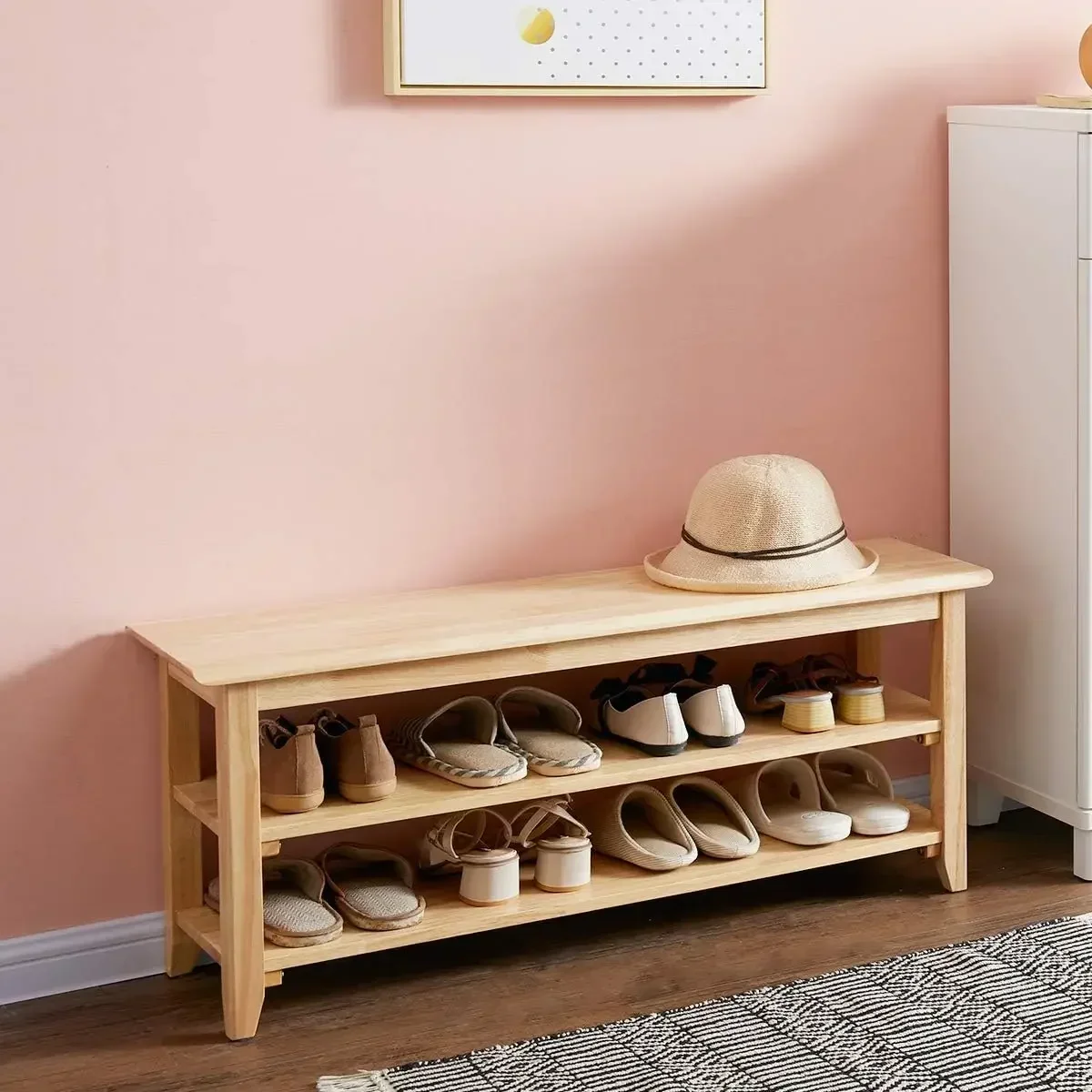
Solution-Focused Storage for Everyday Items
Different household items require specific storage approaches for maximum organization and accessibility:
Shoes
* Reserve bench cubbies for in-season, frequently worn shoes
* Allow 4-6 inches (10-15cm) width per pair of adult shoes
* Use boot trays for wet or dirty footwear
* Consider vertical organizers for maximum capacity
Coats and Bags
* Install hooks 5-6 feet (1.5-1.8m) from floor for adult items
* Allow 4-6 inches (10-15cm) between hooks to prevent crowding
* Use lower hooks (3-4 feet/0.9-1.2m) for children’s items
* Select sturdy hooks rated for at least 10 pounds (4.5kg) per item
Mail and Papers
* Create a dedicated sorting station with categories for action items, reference, and recycling
* Process mail daily to prevent accumulation
* Use vertical sorters to maximize space efficiency
Keys and Small Essentials
* Position a small tray or bowl at entry point for consistent placement
* Consider a wall-mounted key rack with additional hooks for dog leashes
* Label hooks for different family members or vehicle types
For comprehensive entryway organization, many homeowners find that hall trees with coat rack benches offer the perfect all-in-one solution, combining multiple storage functions into a single, space-efficient unit.
Space-Saving Hacks for Small Entryways
Limited space doesn’t mean limited organization potential. These strategies help maximize even the most compact entryways:
- Choose narrow-profile furniture specifically designed for tight spaces (as slim as 12 inches/30cm deep)
- Utilize corner spaces with L-shaped benches or corner shelving units
- Install hooks on the back of the entry door for additional hanging storage
- Select benches with angled shoe compartments to maximize storage capacity
- Use mirrors to create the illusion of more space while serving a practical function
- Implement stackable storage containers that grow vertically rather than horizontally
- Consider wall-mounted drop-leaf surfaces that fold away when not needed
Light colors and adequate lighting help small entryways feel more spacious. Strategic organization for narrow entryway spaces often involves creative solutions like floating elements that keep floor space open and visually enlarges the area.
Family-Friendly Entryway Organization Strategies
Entryway Bench with Cushion, Mudroom Bench with Cushion, Shoe Bench for Entryway
$1,186.63 Select options This product has multiple variants. The options may be chosen on the product pageCoat Rack Shoe Bench, Corner Entryway Bench, Corner Hall Tree, Shoe Bench for Entryway
$313.58 Select options This product has multiple variants. The options may be chosen on the product pageEntryway Bench with Back, Modern Entryway Bench, Shoe Bench for Entryway
Price range: $463.13 through $474.44 Select options This product has multiple variants. The options may be chosen on the product pageShoe Storage Bench for Entryway
$459.02 Select options This product has multiple variants. The options may be chosen on the product pageEntryway Bench with Shelf Storage, Shoe Bench for Entryway, Shoe Storage Bench
$194.08 Select options This product has multiple variants. The options may be chosen on the product pageCorner Entryway Bench, Entryway Bench with Cushion, Modern Entryway Bench, Shoe Bench for Entryway
$476.34 Select options This product has multiple variants. The options may be chosen on the product page
Creating an organized entryway that works for every family member requires thoughtful customization. Consider these family-focused approaches:
Assign designated storage spaces for each person, clearly identified with names, colors, or pictures for younger children. Position children’s storage at appropriate heights—typically 24-36 inches (61-91cm) from the floor for elementary-age children.
Implement simple systems that children can maintain independently:
* Color-coded baskets for each family member
* Picture labels for non-readers
* Low hooks that children can reach without assistance
* Open cubbies that don’t require complex opening mechanisms
Create “getting ready” and “coming home” routines that involve the whole family in maintaining organization. Teaching children to use their designated mudroom bench cubbies builds lifelong organizational habits while keeping your entryway functional for everyone.
Premium Organizational Systems: Investing in Long-Term Solutions
Quality organizational furniture represents an investment in daily functionality and home aesthetics. Premium solutions offer benefits beyond basic storage:
- Structural integrity that withstands years of daily use
- Superior materials that resist wear and maintain appearance
- Precision engineering with smooth-operating drawers and doors
- Thoughtful design details that enhance functionality
- Timeless aesthetics that won’t quickly become dated
When evaluating quality, examine these indicators:
* Solid wood construction versus particleboard
* Dovetail or mortise-and-tenon joinery
* Smooth-gliding drawer mechanisms
* Even, durable finishes
* Quality hardware with substantial feel
While premium organizational systems from brands like Nested Goods represent a higher initial investment, their durability and timeless design make them cost-effective long-term solutions that continue to function beautifully for many years.
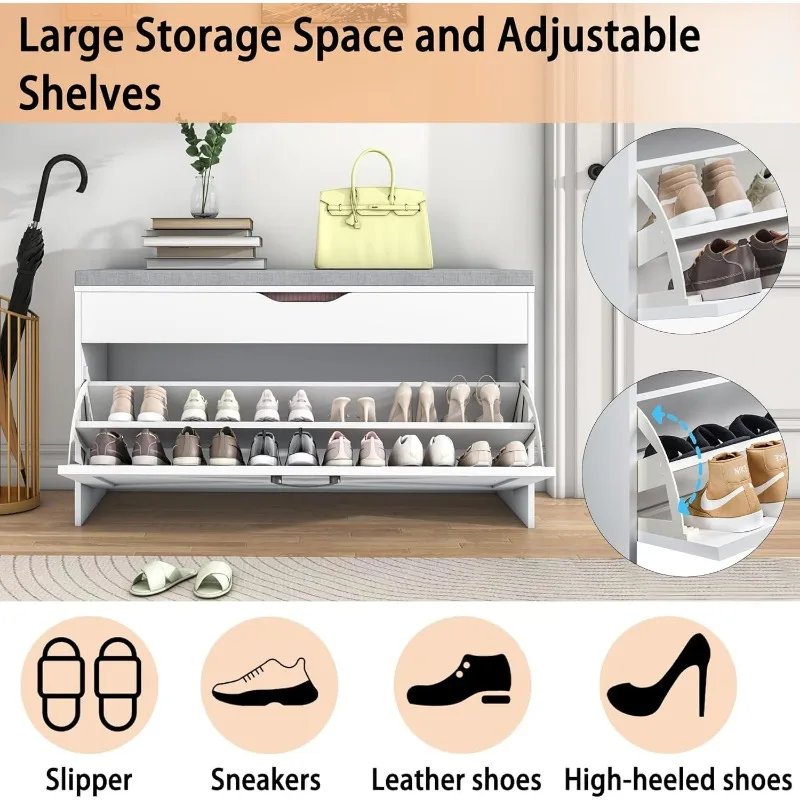
Maintenance and Evolution of Your Entryway System
Even the best-designed organization system requires regular maintenance to remain functional. Implement these routines to keep your entryway operating efficiently:
Daily reset (5 minutes)
* Return items to designated locations
* Hang coats and bags on appropriate hooks
* Place shoes in proper storage areas
* Sort mail into action categories
Weekly review (15 minutes)
* Remove items that belong elsewhere in the home
* Wipe down surfaces to prevent dirt accumulation
* Assess what’s working and what needs adjustment
* Return seasonal items no longer in regular use
Seasonal rotation (1-2 hours quarterly)
* Switch out weather-specific gear
* Deep clean all storage components
* Reassess organization needs based on changing activities
* Purge accumulated items no longer needed
As family needs evolve, your organization system should adapt accordingly. The best small benches for entryways offer versatility that accommodates changing household requirements through different life stages.
How to Create an Inviting Atmosphere While Maintaining Organization
An organized entryway should be both functional and welcoming. Balance practical storage with these design elements to create an inviting first impression:
- Layered lighting with overhead fixtures plus a lamp for warm ambiance
- Mirror placement to reflect light and create spaciousness
- Live plants to bring nature indoors (choose varieties suited to your entryway’s light conditions)
- Personal touches like family photos or meaningful artwork
- Seasonal accents that refresh the space throughout the year
Select a cohesive color palette that complements adjacent rooms for visual flow. Consider introducing texture through natural materials like woven baskets, wood tones, or textiles to soften the utilitarian aspects of storage.
Your entryway sets the tone for your entire home—keeping it organized doesn’t mean sacrificing style. Finding the right balance between organizing shoes in your entryway and maintaining an aesthetically pleasing space creates a harmonious entrance that serves both practical needs and visual delight.
When Should You Consider a Custom Entryway Solution?
While pre-made organization systems work well for many homes, certain situations might call for custom solutions:
When should you explore custom options?
* Your entryway has unusual dimensions or architectural features
* Standard furniture consistently fails to address your specific storage needs
* You have unique items requiring specialized storage
* Your household has accessibility requirements not met by standard options
* You desire seamless integration with adjacent rooms
Custom solutions offer precisely tailored dimensions, materials that match existing woodwork, and configurations designed for your specific storage challenges. While requiring greater initial investment, custom pieces provide perfect-fit solutions for challenging spaces.
Consider consulting with a professional organizer or custom furniture maker who can evaluate your specific challenges and design a system perfectly suited to your home’s architecture and your family’s lifestyle. The perfect organizational system feels intuitive to use while complementing your home’s inherent character.

